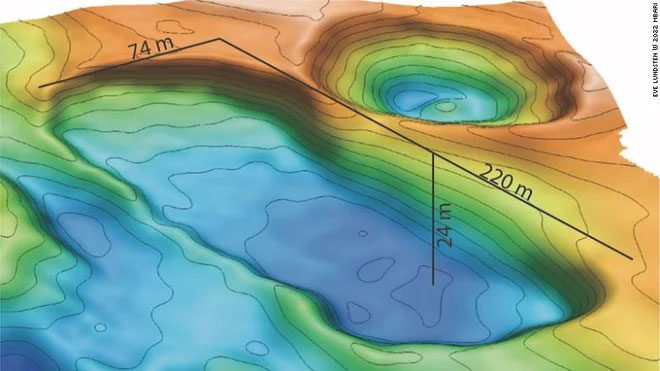Geologists have reported an unusual phenomenon of large craters forming at an “extraordinary” rate on the floor of the Arctic Ocean, CNN reported on March 15.
The study was conducted over a 26 square kilometer area in the Beaufort Sea of Canada, part of the Arctic Ocean. By comparing seabed images from 2010 and 2019, scientists discovered 41 new deep craters formed within nine years.
These craters are typically round or oval and have an average depth of 6.7 meters. The largest crater reaches a depth of 29 meters, with a length of 225 meters and a width of 95 meters—equivalent to an entire city block.

A large crater measuring 29 meters deep has been discovered on the Arctic Ocean floor. (Photo: CNN).
Additionally, scientists have identified several “ice hills” formed during this period. These hills have an average height of 10 meters and a diameter of about 50 meters, composed of ice.
Experts believe that this phenomenon cannot be explained solely through the lens of conventional climate change.
“The data we have does not indicate a warming trend in the deep waters about 150 meters below the seabed,” said geologist Charlie Paull, one of the lead authors of the study.
According to scientists, these craters may be the result of climatic changes occurring over hundreds, or even thousands, of years, as the permafrost beneath the seabed reacts more slowly to climate impacts compared to land.
“We know that significant changes are happening around the Arctic region, but this is the first time we have been able to use technology to observe these changes occurring offshore,” Paull remarked.
“These large changes will have significant implications for any structures placed on the seabed,” Paull shared. “Currently, the number of structures in this remote Arctic region is not large. However, this could change if the Earth warms and makes this area more accessible.”





















































